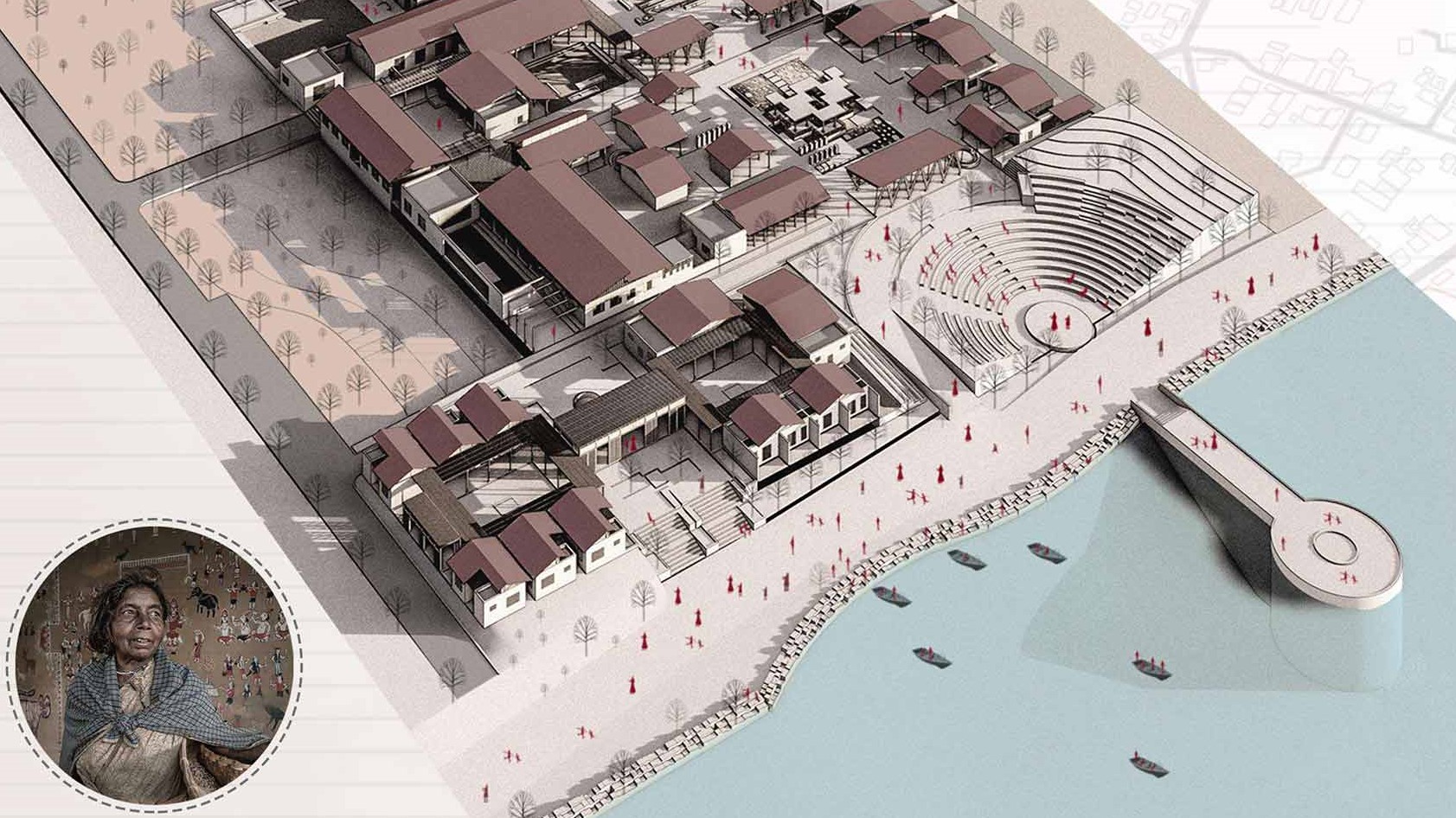top architecture design thesis 2020


GIJUBHAI CHHAGANBHAI PATEL INSTITUTE OF ARCHITECTURE
SURAT, INDIA

Design thesis authored by
NISHU S JINDAL
share
THESIS SPECIFICATIONS
Thesis Title: Pehchaan
Location : Jagdalpur, Bastar, India
Project type: Ethnic Centre for Arts, Craft and Human Resource
Year of completion : 2020
Name of Thesis mentor: Architect Nirav Shah
Background
For a particular place, the main essence of its identities lies in their lifestyle, culture, traditions and their ideologies. Art and crafts form a valuable cultural trait of a society from the beginning of the civilization. The cultural pattern of a society is reflected through the quality craft and craftsmanship of the people. Among the diversified population a significant portion is comprised of the tribal people, the original inhabitants of the land. The tribal culture of India and their traditions and practices pervade almost all of the aspects of Indian culture and civilization. Bastar, one such tribal district of Chattisgarh is the land of handicrafts and natural resources.
The tribes of Bastar are famously known for their indigenous quality in making handicrafts and arts beautifully. The tribal society of Bastar is popular for their work that includes magnificent handicrafts in different shapes and sizes. The craft work incorporates wood—carvings, Bell metal products, terracotta items, bamboo decorative pieces. Each tribal group of this area has its own culture that stands apart from the rest. Every tribe of Bastar also enjoys a unique traditional living style that’s worth a watch. The dialects of these tribes differ from each other as do their traditions, eating habits and costumes. So, the Tribal Culture in Bastar presents a lot of variety for the onlookers.
For so many years, these tribal people clanged to their identity despite of the external influences that threatened their culture especially after their post-independence turbulent period. On one hand, Bastar craft forms are gaining global recognition yet on another hand, these tribal sects are losing their essence due to a lot many factors. The beauty, diversity, and culture have taken a back seat for Bastar. Despite surrounded by copious beauty, the conflict smothers the real essence of the region, with diverse culture and unique biodiversity. Thus, it is important to understand their ethnicity and uniqueness in order to attempt to safeguard their identities and skills so that they are not dwindled.
The Proposal
The project “Pehchaan – Ethnic Centre for Arts, Craft and Human Resource at Jagdalpur, Bastar” focuses on the aim to provide the recognition and respect to the tribal sect of Bastar that they actually deserve. It aims to empower and uplift this tribal lifestyle by providing a platform for indigenous art and craft forms along with demonstrating and celebrating tribal cultural aspects. Also, to understand how to design such a built-form for tribal, which capitalizes on their natural environment and forms a self-sustaining unit where one can function within their original milieu. The thesis endeavours to understand the process which will help ensure the continuity of their traditions and culture and integrate the whole community.
The intent of the project is to analyses various cultural practices, ideas of social aspects and form of expressions as a tool to empower the tribal of Bastar. The premise functions in a co-operative style, that works with tribal from approximately 40 village within 40 kms of range around Jagdalpur. With employing various activities like Design Cell, Food innovation centre, Inhouse packing and marketing cell, newer forms and designs could be developed keeping the core values of these crafts intact. It will act as a medium for introduction of various permutation and combinations that could be created by using their tribal essence with the help of research and computation. The Centre would be a medium for the coming generations and for the interested and skilled individuals to learn the unique art forms and their cultural values. The cultural and social values of tribal are given prime importance in the project by means of providing spaces and areas that harness the ethos such as Mahua garden trails, Amphitheatre, boating activities, viewing decks and artefacts. Landscape strategies and methodologies are worked out in order to integrate the true essence of tribal life.
To uphold tribal legacy, we need both, technological advancements with sensitivity and appreciation among larger audience to sustain in contemporary era. The architectural exploration draws inspiration from the life of tribal and their spatial atmosphere. The entire theme of the thesis revolves around the celebration of tribal lifestyles. The architectural strategies and spatial organization are derived from the historical design principles of the context – Simplicity, Honesty of materials, Trueness of structure and Optimum intervention. The design is worked on providing a central axis which overlooks on all the activities of the centre. With the series of courtyards ranging in their scale, functions and workability, a different set of value is assigned to each of them which is very true to the tribal grounds. The design ideas are manifested into pitch roof structures and pavilion-like structures made from a combined use of vernacular materials such as Hempcrete, bamboo, rammed earth and advanced techniques of construction generating a background within which a craftsperson designs and creates their own unique self-made workspace to get inspired from. Each space is designed so as to facilitate the activities taking place and is multipurpose in nature. Various water harvesting techniques and integrated landscape techniques are employed so as to help the project attain some degree of sustenance of its own. The acknowledgement of tribal settlement essence and forms in the project will preserve the essence of tribal settlements, deserves upliftment of its heart and soul which can not only sustain the carrying capacity but also live through the times setting an example for the coming generations as an important link of cultural heritage of India forgotten by the people as visitors and dwellers.
Sheets
the end
Copyright information: ©️ Student author 2021. Prior written authorization required for use.
Request permissions: If you wish to use any part of the documentation forming part of the undergraduate thesis submitted to DSGN arcHive, please seek prior permission from the concerned student author through the respective college/university.
Exclusion of liability: DSGN arcHive and its owner do not undertake any obligation to verify the ownership of any content submitted for publication/broadcast on this website and shall not be liable for any infringement of copyright by, or unauthorized use of, such content.
HOMEPAGE
Copyright © 2025 DSGN arcHive
